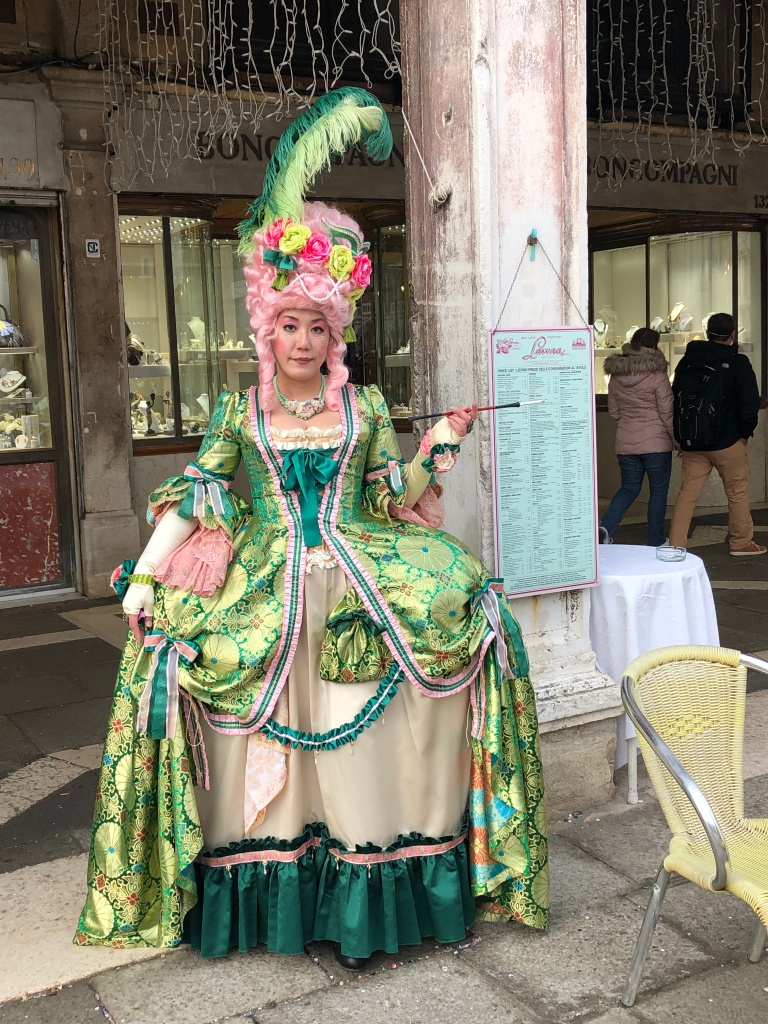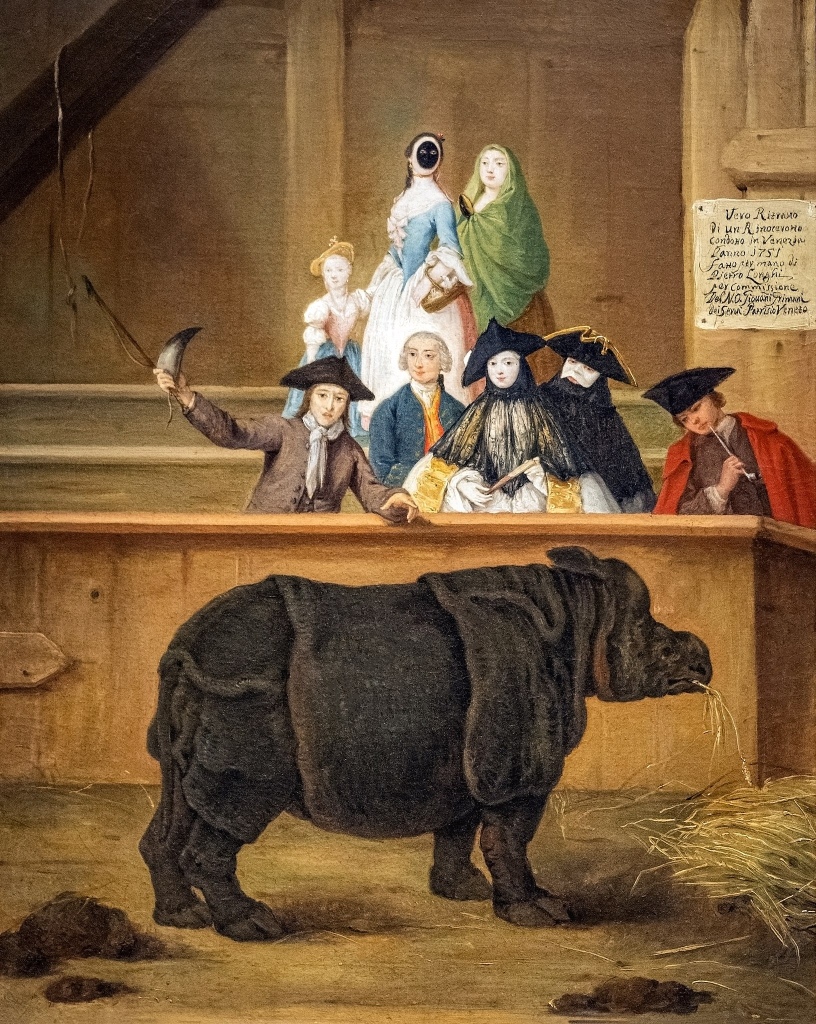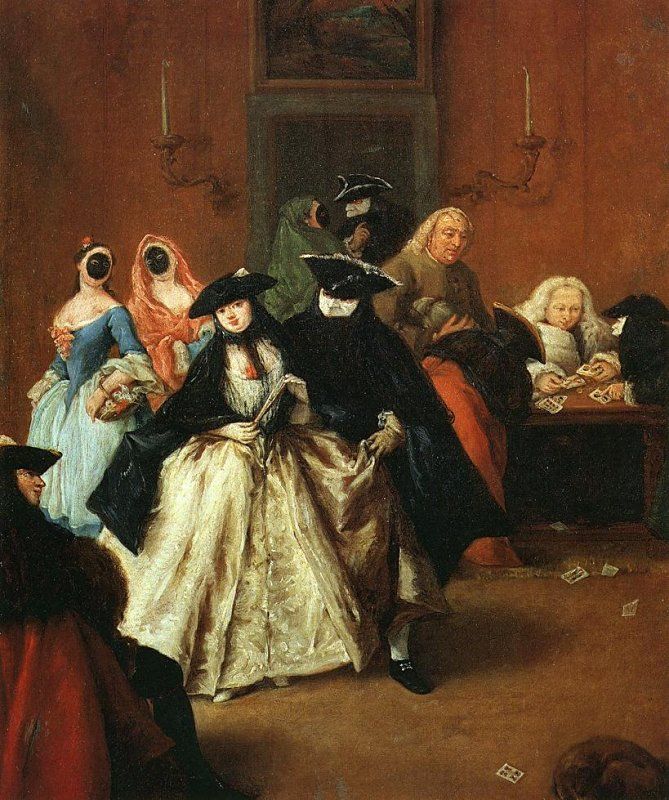It’s the shadows that I notice first as I am plunged into the half light, a sharp contrast from the brightness of the midday sun on Riva Schiavoni. As my eyes struggle to adjust I proceed determinedly, through the narrow, dark streets of Castello, along twisting alleyways and over small bridges. I’m transported back in time to the days of Carlo Goldoni, one of Venice’s most famous playwrights. To an 18th century city bursting with vitality, a riotous blend of dealers and hawkers, traders and tricksters. A chaotic barrel of life, that is noisy, brutal, funny and often cruel.
An alley to my right leads to the Giardinetto ‘ristorante’ that has been run by the same family since 1949, there’s a hidden garden at the back and a delicious range of ‘antipasti’ dishes lovingly arranged in an old fashioned glass cabinet. On high water days the front of the building is submerged, you need wellington boots to get in, but the garden and back of the property are dry. Last time I had lunch there I went in through the front door and out through the back as the waters of the lagoon rose beyond the threshold. The waiters, who’ve all been there about a million years, wore waterproof boots as they served a handful of stalwart diners. I’ve often dreamed of going in the front of the restaurant as a 21st century person and emerging at the back in an elegant gown, with a lace fan, an elaborate hair-do and handmade leather shoes with polished buttons. A fashionable lady of the 18th century. Perhaps I was a member of the Grimani family whose palace is just about five minutes away.
GRIMANI – In fact the street entrance to Palazzo Grimani can easily be missed. It’s not inviting, it’s dark, windowless and grimy. However a little bit of curiosity reveals an elegant courtyard and a large palace. The main reception rooms are beautifully decorated with ornate ceiling frescoes. Giovanni Grimani was one of the most influential members of the Grimani family. During his lifetime he built up a huge collection of ancient statues and marble carvings which he displayed in his house, in the style of a Roman or Greek sculpture gallery. The Grimani collection must have been the talk of the town in the late 16th century. Grimani was a controversial character, the Catholic Church regarded him as too liberal and a supporter of ‘Lutheran ideas’ popular in Northern Europe at the time. Rather oddly he held the position of Patriarch of Aquileia one of the most important religious positions in northern Italy at the time. Grimani was a man of contradictions. He was a perfect Venetian citizen, in that sense, for nothing is ever quite as it seems.
By the time I emerge from the Giardinetto restaurant, I’ve reinvented myself too, I am wearing a fine gown I’m probably in the 1750s and I’m heading for coffee, or an afternoon at the card tables of the ‘Ridotto’ one of Venice’s state owned gambling parlours. Venice has always had a libertarian approach to most things, which made the city a very popular destination for wealthy young men travelling through Europe on the Grand Tour. So if I’m lucky I’ll meet some entertaining characters. I’ve heard that the famous Casanova frequents the gambling tables as often as he can. I think I’ll start at Palazzo Querini. All I have to do is totter through Campo Santa Maria Formosa and I’m there at the sprawling palace of my neighbours. Now that the idea of travelling through Europe has become fashionable Venice is filled with groups of grand tourists from England, Germany, France and Holland. The atmosphere is vibrant, rowdy even, it’s a cosmopolitan social scene that I’m eager to enjoy.



The Palazzo Querini is an imposing palace opposite the Church of Santa Maria Formosa – the entrance is over a small bridge – tricky to navigate in my high heeled shoes but I manage it. There’s a couple of gondolas moored outside, the gondoliers are awaiting their next passenger. On a whim, I attract the attention of the nearest boatman and ask the fare to San Marco, he looks at me bemused. In 18th century Venice the gondoliers worked exclusively for aristocrats – sometimes just for a single family. A passer-by like me was certain to be ignored. At that moment the heavy timber door to the palace opened and a group of well dressed ladies and gents emerged. They walked over the bridge and into the square. The gondoliers sprang to their feet and greeted their guests. They readied their boats and manoeuvred into position, each gondola would take four people and there were at least ten people in the party.
In the confusion that followed I was invited to board the third and final gondola. I found myself surrounded by chatter and laughter as the gondolas proceeded along a series of tiny waterways towards San Marco. The conversation was in Italian, French and English. I discovered the group were guests of the aristocratic Querini family, who owned the vast Palazzo Querini. Alvise Querini, had recently returned from Paris where he was Venetian Ambassador to the Court of France. He and his wife Maria Teresa were known for their love of art and literature. The Palazzo Querini was famous for it’s library which would be opened to the public years later – as a hugely generous and philanthropic gift to the city of Venice.
The joyful mood continued as our party was propelled under the Bridge of Sighs and out into the open waters of the lagoon – it turned out that our destination was the Piazzetta next to the Palazzo Ducale where the two immense columns of San Teodoro and the ‘Winged Lion’ of St Mark stand. A crowd of people were milling about on the waterfront and a strange collection of wooden sheds had been hastily constructed on the usually sparkling, white stones of the quay. As we disembarked from the gondolas and walked into the square I realised what was causing all the excitement. There was an animal, a pachyderm in a large straw-filled pen, standing and looking at the assembled crowds. From the shouts of the spectators I learned that the animal was called Clara and was in fact a rhinoceros. It was the first time that such an exotic animal had been seen in Venice. The unfortunate animal was doing a tour and had already been exhibited in various German towns before being transported over the Alps to the Italian peninsula.
Whilst I was interested and amazed to see a rhinoceros in St Mark’s Square I was even more interested to observe the ladies and gentlemen in my party. They were elaborately dressed in fine silks and velvets. The ladies wore beautiful gowns, lace gloves and elegant wigs. Many of the party covered their faces with the famous Venetian masks of the Carnival Season. When a tall, imposing gentleman suggested the party move on to the ‘Ridotto’ there was a general flurry of nodding heads and murmurs of agreement. The tall gentleman had easily seized the floor and certainly the attention of the ladies in the group.


Venice as a city is medieval in plan with numerous small streets, tiny canals and bridges linking one part of the city with the next. From San Marco it was a short walk to the ‘Ridotto’ the government owned and sponsored gambling centre of Venice. In theory the ‘Ridotto’ was open to anyone, in practise it was the domain of the wealthy. Only the nobility and the occasional bishop or cardinal had the luxury of leisure time and the financial means to gamble. My companions all knew where they were going and seemed eager to try their luck. A card game called ‘faro’ was on everyone’s lips. The charmer introduced himself as Count Farussi, he was eloquent and charming, a wit and a raconteur. I watched, wide-eyed as the others in my party settled themselves at various gambling tables. I positioned myself silently in the shadowy corner of the room – from this vantage point I could see the comings and goings of Venetian high society. There was gambling, conversation, flirtation and a great deal of mask wearing. I could see Count Farussi (one of his many pseudonyms) moving around the room, charming and engaging the many ladies present. Everyone seemed to know everyone in this darkened room. Even the cashier at the very back of the salon engaged with the gamblers with a nod of his head and a carefully inked entry in his leather-bound ledger.
A young man came over to me and asked if I was a sister of Giustiniana Wynne – I shook my head. Funnily enough I knew of the young woman, I’d heard about her a year or so earlier. Giustiniana was a great beauty, born in Venice; her parents were an English father Sir Richard Wynne and Anna Gazzini, the daughter of a Venetian merchant. The couple produced several children out of wedlock, before eventually marrying. This was scandalous behaviour in the eyes of the deeply conservative Venetian aristocrats. Giustiniana’s ability to find a suitable husband was seriously and fatally compromised by her illegitimate status at birth. Years later she attracted the attentions of Casanova whilst staying in Paris, but that comes much later in her story.
CONVENTION – It was a very small world in 18th century Venice where everyone knew everyone. Society was rigid and inflexible. Marriages could only take place among families of equal stature. Children born out of wedlock, gambling debts or a criminal past were all unforgiveable sins likely to condemn the perpetrator to a prison sentence or, even worse, a life excluded from society. In such a claustrophobic environment it was difficult although not impossible to conceal any indiscretions or misdemeanours. Any Venetian of noble birth worked on the principle of one rule for them and another rule for everyone else. Those that had to obey the rules and social conventions were females, all females, regardless of class and anyone, male or female who was not of noble birth. This duplicitous approach to the rules created an atmosphere of deceit and chicanery. No wonder the wearing of masks was so popular. When all else failed a trip to Paris, Rome or even London could provide the change of air required to escape one’s past and reinvent a new future. It also gave eligible young women the opportunity to find a suitable husband even if the rules had been broken.


In the 1750s Venice’s glory days as the merchant city and trading centre for most of the Mediterranean was a fading memory. However the legacy of Venetian-owned trade routes and exotic cargoes coming from Constantinople, Greece and the Orient lived on. Venice remained an important centre for luxury goods; silks, damasks, spices, glass, lace and perfumes. As the years went by Venice began to reinvent herself as a city of luxury and abundance, the party city of Europe. There were numerous theatres, endless concerts and a social scene that attracted fun-lovers from far afield. There was also gambling – lots of gambling – as I discovered that afternoon at the ‘Ridotto’ observing silently from my shadowy corner. It was this atmosphere of fun and socialising that entertained and amused Casanova for so many years, perhaps if I wait patiently I will actually meet him.
There’s talk among the party-goers of a stroll over to Palazzo Balbi, the grand house occupied by Joseph Smith, the British King’s representative in Venice. I’ve heard of Mr Smith, he hosts parties constantly. He’s also a great patron of the arts. He supports a local artist called Antonio Canale – known to the Grand Tourists as Canaletto – a great painter known for his ‘view paintings’ of Venice. Joseph Smith had recently commissioned six canvases of the Grand Canal, which he was trying to sell to George III. Every British tourist passing through Venice paused in Sir Joseph’s drawing room to admire the paintings and to enjoy his legendary hospitality. I’d heard that Casanova actually met Giustiniana Wynne for the first time at Palazzo Balbi.

I’ve realised that 18th century Venice is an exciting and dynamic melting pot of parties, gambling and art. The foreign visitors arriving in the city have money to spend, lots of free time and a desire to have fun. As Carlo Goldoni, the Venetian playwright, observed in his bawdy plays, Venice was a city of characters, a place of wheeler-dealers, actors, performers and chancers. Casanova and Canaletto forged their careers here. It was ‘…..the city that never sleeps of the 18th century….’
Venice is and always has been a unique and vibrant city marooned between land and sea where visitors could be whatever they wanted to be and reinvention was always possible. No wonder mask wearing was so popular. For the time being I’ll keep lurking in the shadows of the casino, who knows what famous characters will gamble away their inheritance today……
Notes:
- The Grand Tourists were instrumental in supporting Venice financially in the 18th and 19th centuries.
- Many of the Venetian palaces are now important art galleries – just two I’d like to mention here are:
- Palazzo Grimani which has a wonderful exhibition of classical sculptures on display.
- Palazzo Querini Stampalia – currently exhibiting art from Da Romano Trattoria, Burano
- If you’d like to travel with us in 2022 check out: www.grand-tourist.com
- You can also see our Calendar of Trips / Activities for 2022: Calendar – 2022
- We also offer tailor-made travel planning to create the Italian journey of your dreams.

January, 2022


You sum up very evocative scenes of Venice, Janet. Every reading of your blogs tempts me to sign up for one of the trips there! I love the illustrations you use and seeing the Wallace Canaletto has made me determined to visit the Collection next time I’m in London. I really need to see this again.
LikeLiked by 1 person
Hello Mari – thank you so much – yes The Wallace Collection is wonderful as indeed is The Queen’s Gallery – have a great day!
LikeLike
Janet–I love how you place yourself right in the middle of the paintings you display. That’s what I do when I paint a scene–what would I experience there? What feelings are evoked by my surroundings? The difference between you and me (well, one difference) is that you write your feelings and I paint my feelings. And I love your writing! Thanks!
LikeLiked by 1 person
Thank you Mary Lou – I so appreciate your kind comments x
LikeLike
I so loved the reproductions above – so miss Venice. The pictures brought back many many lovely memories. Thankyou
LikeLiked by 1 person
Thank you Nicole – I’m honoured!
LikeLike
Hi, Janice.
What happened at the end of your fabulous article? “I’ve realised that 18th Century Venice is a….” Is a WHAT? Did you ruin out of inspiration, time, or just of ink for your quill pen?
What a great account of your visit to Venice all those years/centuries ago. I’m not surprised that you remembered it in such detail – and that gorgeous photograph of you in the green gown with the multi-coloured wig and green feather, outside the Palazzo Querinin; However, despite all the finery, I still recognised you straight away! You cartoony are one elegant lady!
What a great blog to start off the New Year – thank you so much for that, and I look forward to reading about the rest of your Venetian adventures – including when you finally met Giacomo Casanova!
In the meantime, thank you again for an inspirational set of articles in 2021 and I look forward to reading an equally fascinating series in 2022!
Ciao
Giovanni
LikeLiked by 1 person
Giovanni – I am indebted to you – as always (check your e-mail), thank you x
LikeLike